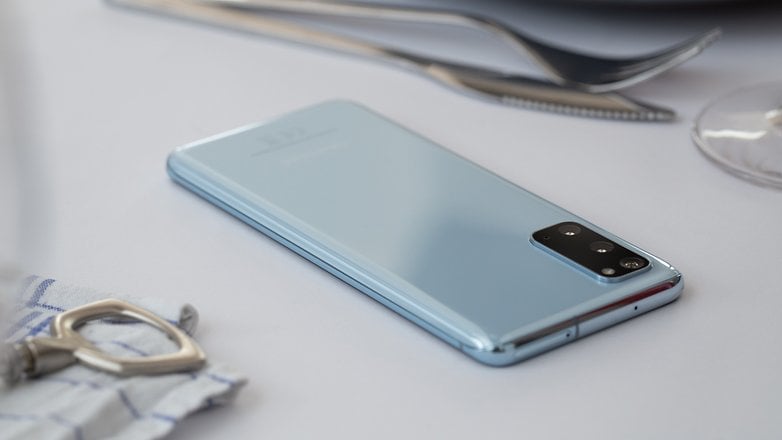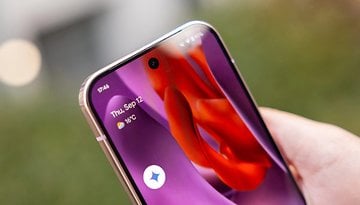Samsung Galaxy S21 vs. S20: Should you upgrade?


Soon after the launch of the Samsung Galaxy S21, the one question I had in mind was whether I should treat myself to an upgrade as an existing owner of the existing Galaxy S20. Or should I not because the so-called new feature additions on the S21 not significant enough to warrant an upgrade? The purpose of this comparison article is to get to the bottom of this dilemma!
When smartphone manufacturers release successors to a popular smartphone model (typically on an annual basis), it doesn't always turn out well. And I think that is somewhat the case with the Samsung Galaxy S21 as well. Most of the changes to the phone seem to be minor upgrades over its predecessor.
In this article, we do a spec-by-spec comparison of both these phones. We follow that up with five 5 arguments in favour and against an upgrade.
Galaxy S21 vs Galaxy S20: Specifications comparison
Let's start with the spec-sheet of both these phones and look at the bare facts.
Galaxy S21 vs. Galaxy S20: Hardware specs
| Model | Galaxy S21 5G | Galaxy S20 |
|---|---|---|
| Processor | Samsung Exynos 2100: 5nm 64-bit octa-core processor |
Exynos 990 |
| Memory (RAM / internal) | 8GB / 128 GB 8GB / 256 GB |
8GB / 128GB |
| Expandable memory? | No | Yes, MicroSD |
| Dual SIM | Yes (SIM1 + SIM2 or SIM1 + eSIM) | Yes |
| Display | 6.2-inch Dynamic AMOLED display with punch-hole notch / FHD+ (2,400 x 1,080 pixels) at up to 120 hertz / 1,300 nits max / 421 ppi / no curved display | 6.2-inch Dynamic AMOLED display with punch-hole notch / QHD (3,200 x 1,440 pixels) / 120hz at FHD+ - 60 Hz at QHD |
| Size | 151.7 x 71.2 x 7.9 millimeters | 151.7 x 69.1 x 7.9 mm |
| Weight | approx. 169 grams | 163 grams |
| Connectivity | 5G, LTE, WLAN 802.11 a/b/g, Wi-Fi 6, Bluetooth 5.0, USB Type-C, NFC, GPS | LTE, WLAN, 802.11 a/b/g/n/ac/, Wi-Fi 6, Bluetooth 5.0, USB Type-C, NFC, GPS |
| Main camera | 12MP 1/1.76" sensor and f/2.2 lens | 12MP 1/1.76" sensor and f/2.2 lens |
| Ultra-wide angle | 12MP - 1/ 2.55" sensor and f/2.2 lens | 12MP 1/ 2.55" sensor and f/2.2 lens |
| Telephoto | 64MP - 1/1.72" sensor and f/2.0 lens | 12MP 1/ 2.55" sensor and f/2.2 lens |
| Telephoto (2) | - | - |
| Front camera | 10MP on 1 /3.24" at f/2.2 | 10MP on 1 /3,24" at f/2.2 |
| Video | max. 8K video at 24 fps | max. 4K video at 60 fps |
| Battery capacity | 4,000 mAh | 4,000 mAh |
| Charging technologies | Fast charging at 25 watts, wireless charging at 15 watts | Fast charging at 25 watts, wireless charging at 15 watts |
| Authentication | Enhanced under-display finger sensor, face recognition | Under-display fingerprint sensor |
| Audio | Stereo speakers | Stereo speakers |
| Materials | Gorilla Glass Victus on the front, polycarbonate on the back | Gorilla Glass 6 on the front, Gorilla Glass 6 on back |
| Operating System | Android 11 with Samsung UI 3.1 | Android 11 with Samsung UI 3.1 |
| Compatibility with S Pen | No | No |
| Charger included? | No | Yes |
| Price | 849€ / 899€ | from 899€ |
| Release | 29 January 2021 | March 6th, 2020 |
| Review | Galaxy S21 review | Galaxy S20 review |
I didn't go into quite as much detail about the technical specifications of the Plus and Ultra models in this article. However, I will mention the devices whenever there are significant differences.
A case for an upgrade: The new design
In my opinion, Samsung has managed to do one thing right in particular with all three Galaxy models: introduce a fresh and, above all, unique design language. This is mainly due to the camera bump, which merges into the case on both sides of the S21, the S21 Plus and the S21 Ultra. This makes the hump look much more discreet.
My feeling is that the camera bumps are a bit less protruding compared to the Galaxy S20 anyway. Yes, the S21 Ultra's camera module still takes up a large chunk of space, but that's just simply unavoidable (for the moment) when using periscope lenses. Then again, the transition into the body makes the phone easier to grip.

The S21 series also managed to stand out from other smartphones thanks to its new colours. For me, the Samsung Galaxy S21 Plus thoroughly deserved to pick up a win as the most beautiful Android flagship of the year earlier this January, as the purple and gold paint scheme proved to be really cohesive. The standard model also comes in Phantom Violet, Phantom Gray, Phantom White and Phantom Pink colours. As for the Galaxy S20, except for the FE version, you could only choose between a pink, blue, and black finish.

Here is a quick word on the plastic back that still grates certain quarters. The standard version of the Samsung Galaxy S21 comes with a back made out of polycarbonate (glorified plastic). However, since the build quality is pretty good, this fact didn't bother me too much.
This is a downgrade: No micro SD card support
An omission that many flagships have this year: Compared to the S20, Samsung has eliminated support for micro SD cards and thus the possibility of memory expansion in the S21 models. So, at most, you'll find 512 GB of storage space in an S21 series model - and that's only in the Galaxy S21 Ultra. Considering how large media files have become over the years, missing out on a micro SD memory card slot is a huge mistake.

The Galaxy S21 and Galaxy S21 Plus, on the other hand, come with "only" 256 GB of internal storage. While it might sound like a lot on paper, that can run out quickly, especially when recording 8K video footage. All three predecessors offered the option to expand the storage via a micro SD memory card slot. If this feature is important to you, an upgrade to the S21 series might be less advisable.
Worth the upgrade: Exynos 2100 has better power management
Surprisingly, before the launch of the Galaxy S21 series, Samsung actually showcased its new SoC via its very own special event. The new "powerhouse" is known as the Exynos 2100, and it has proved itself in benchmarks, excelling in one area in particular: superior energy management compared to its predecessor, the Exynos 990. Like Qualcomm with their Snapdragon 888, Samsung uses a tri-cluster architecture with multiple cores on the Exynos 2100.

This has led to better battery life, especially in the S21 Ultra and the S21 Plus. The Galaxy S20 still has the smallest battery in comparison, however, and I tend to hit the critical battery level more often around 9 p.m. even with intensive use at the end of the day. While the battery life is not outstanding when compared to the Galaxy S20, which is also equipped with a similar capacity 4,000 mAh battery, you should certainly be able to get two days out of it with energy-saving modes and dialling down the refresh rate.
The Exynos 2100 is also a much better performer, which means the S21 series finally doesn't fall quite as far behind the Snapdragon variant that is sold in the US.
Not worth the upgrade: If you are looking for a better camera
It is not new for Samsung to save the best camera technology for its Ultra models. It was the same with the Galaxy S20 Ultra and also with the Galaxy S21 Ultra. As Antoine rattled on in detail in his review, the S21 Ultra is the smartphone with the best zoom optics as of March 2021. That's because there's not only a 3x optical telephoto zoom within but also a second telephoto with 10x zoom. Samsung also now uses a 108-megapixel sensor in the S21 Ultra.
Arguing that the Galaxy S21 and Galaxy S21 Plus should be worth the upgrade even if there is no 10x zoom is a fallacy. Because the same 3x telephoto camera does not see action here, but rather, it relies on an approximate 1.1x zoom followed by digital zoom. This was what Samsung achieved with its S20 models.
Compared to its predecessor, the S21+ and S21 Ultra also lack the ToF sensor that was found in the S20+. While its usefulness is certainly debatable, the missing sensor is still a minus point when purchasing the two more expensive S21 variants, and therefore this needs to be mentioned.
As for the Galaxy S21, we can categorically state that no changes are to be expected in terms of camera quality. This does not mean that the smartphone's camera takes bad pictures: Above all, Samsung's software and the software-based camera features of the S21 series are a plus point of the current lineup.
Worth the upgrade: Slight price reduction because of a missing charger
From a purely economic point of view, an upgrade to one of the S21 models could also be worth your time and money for the simple reason that the smartphones themselves have seen a price drop. For one, there's no longer the distinction between 4G models and 5G models, as Exynos 2100 comes with native 5G support. Hence, there's no longer a surcharge if you want to use the latest cellular standard.
In addition, Samsung was able to lower the cost of all three devices by omitting the chargers. The MSRP of the Galaxy S21 is exactly €150 less than that of the S20 5G, while the price difference between the Plus model and the 5G version of its predecessor is €200 and €100 for the Ultra model. However, you will have to take into account that you might have to pick up a charger with a USB-C port with the money saved.
Also worth considering is this 'fact': Samsung's Galaxy S series has gained a reputation for being the undisputed king of price drops! Of course, this all works out in the end: If you had waited to make your purchase, you would have saved money when buying the S21 model. At the same time, selling the S20 series becomes less worthwhile, as the price continues to drop here as well.
Conclusion: S21 upgrade is more for enthusiasts or S10 owners
Overall, I wouldn't say that upgrading from the Galaxy S20 to the Galaxy S21 is worth your money. The technical innovations are too small to take note of, and the latest SoC is perhaps, still the best argument against an upgrade. Flagships have always come with more power, and I think for the average user, they would have hardly scratched the surface when it comes to maximizing 2020's SoC in their daily smartphone use
This makes design a potentially good reason to switch to one of the Galaxy S21 models. But that's a matter of preference, and functionally speaking, you won't be making any huge leaps despite the great looking camera bump.
Click here for our flagship best list
I see the Galaxy S21 as being more interesting for owners of older phones who are looking for an upgrade - whether one is a Samsung fan or not. If you're looking for a sleek and, and more importantly, premium-quality Android phone in 2021, you'll have to consider the S21 series. Here, I end this comparison and take all interested parties to our reviews!












